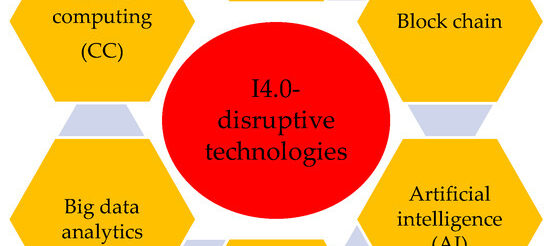Sustainability | Free Full-Text | Sustainable Manufacturing Supply Chain Performance Enhancement through Technology Utilization and Process Innovation in Industry 4.0: A SEM-PLS Approach

Feature papers represent the most advanced research with significant potential for high impact in the field. A Feature
Paper should be a substantial original Article that involves several techniques or approaches, provides an outlook for
future research directions and describes possible research applications.
Feature papers are submitted upon individual invitation or recommendation by the scientific editors and must receive
positive feedback from the reviewers.
Editor’s Choice articles are based on recommendations by the scientific editors of MDPI journals from around the world.
Editors select a small number of articles recently published in the journal that they believe will be particularly
interesting to readers, or important in the respective research area. The aim is to provide a snapshot of some of the
most exciting work published in the various research areas of the journal.
| Construct | Items | Minimum | Maximum | Mean | Std. Deviation | Skewness | Kurtosis |
|---|---|---|---|---|---|---|---|
| TU | TU1 | 1 | 5 | 3.71 | 1.114 | 0.115 | −0.851 |
| TU2 | 1 | 5 | 3.54 | 0.928 | −0.025 | −0.263 | |
| TU3 | 1 | 5 | 3.04 | 1.041 | −0.326 | −0.325 | |
| TU4 | 1 | 5 | 3.05 | 0.978 | −0.432 | −0.126 | |
| LSC | LSC1 | 1 | 5 | 3.76 | 0.924 | −0.892 | 0.931 |
| LSC2 | 1 | 5 | 3.59 | 0.981 | −0.584 | 0.080 | |
| LSC3 | 1 | 5 | 3.75 | 0.916 | −0.828 | 0.840 | |
| ASC | ASC1 | 1 | 5 | 3.12 | 1.001 | −0.203 | −0.436 |
| ASC2 | 1 | 5 | 3.09 | 0.959 | −0.134 | −0.298 | |
| ASC3 | 1 | 5 | 3.34 | 0.943 | −0.413 | −0.111 | |
| ASC4 | 1 | 5 | 3.02 | 0.902 | 0.034 | −0.233 | |
| LEASC | LEASC1 | 1 | 5 | 3.87 | 1.051 | 0.046 | −0.438 |
| LEASC2 | 1 | 5 | 3.95 | 1.061 | −0.074 | −0.533 | |
| LEASC3 | 1 | 5 | 3.08 | 1.072 | −0.185 | −0.511 | |
| LEASC4 | 1 | 5 | 3.21 | 1.073 | −0.305 | −0.444 | |
| GSC | GSC1 | 1 | 5 | 3.59 | 1.039 | −0.683 | 0.011 |
| GSC2 | 1 | 5 | 3.47 | 0.977 | −0.511 | −0.207 | |
| GSC3 | 1 | 5 | 3.82 | 0.958 | −0.863 | 0.645 | |
| GSC4 | 1 | 5 | 3.49 | 1.177 | −0.567 | −0.535 | |
| PI | PI1 | 1 | 5 | 3.47 | 0.977 | −0.511 | −0.207 |
| PI2 | 1 | 5 | 3.95 | 1.061 | −0.074 | −0.533 | |
| PI3 | 1 | 5 | 3.09 | 0.959 | −0.134 | −0.298 | |
| PI4 | 1 | 5 | 3.59 | 0.981 | −0.584 | 0.080 | |
| SSCP | SSCM1 | 1 | 5 | 3.59 | 1.039 | −0.683 | 0.011 |
| SSCM2 | 1 | 5 | 3.87 | 1.051 | 0.046 | −0.438 | |
| SSCM3 | 1 | 5 | 3.12 | 1.001 | −0.203 | −0.436 | |
| SSCM4 | 1 | 5 | 3.76 | 0.924 | −0.892 | 0.931 |
